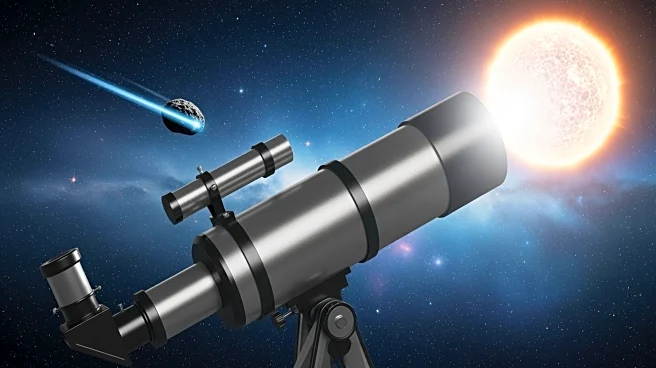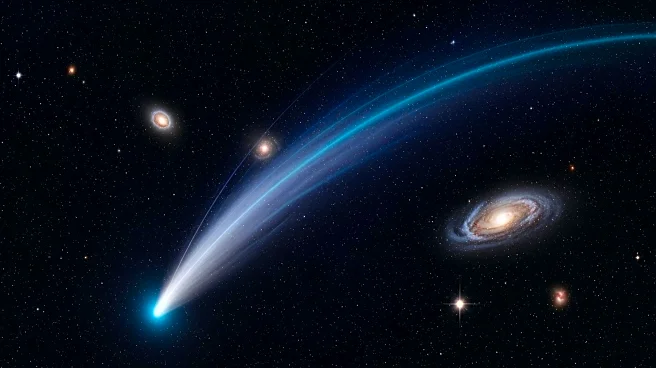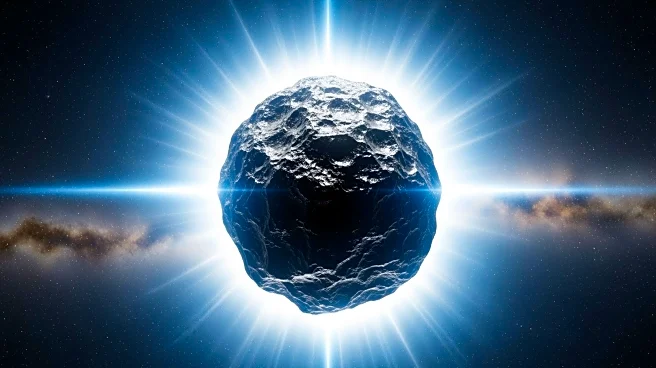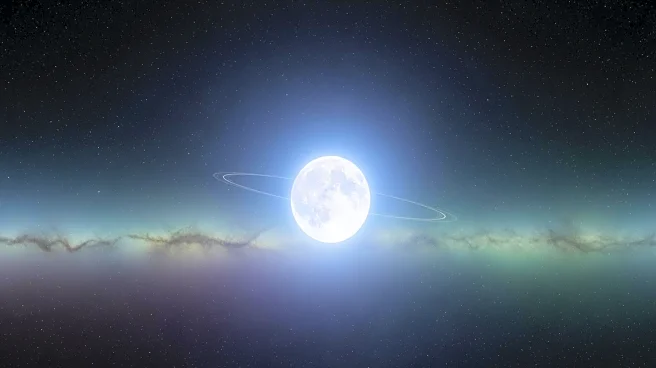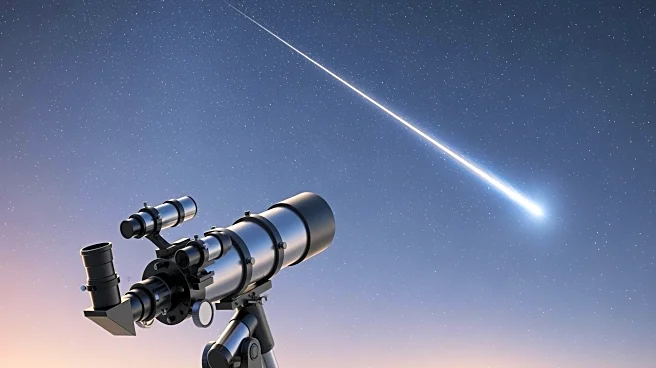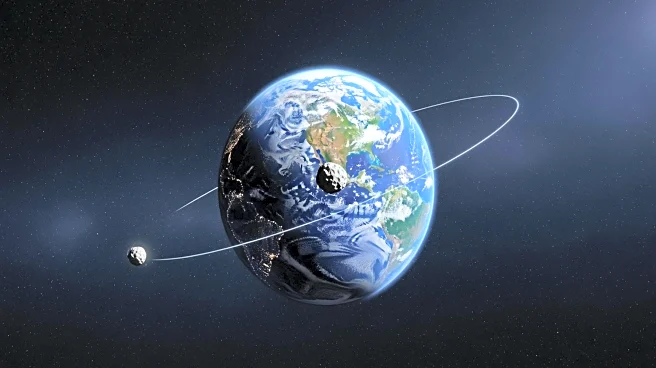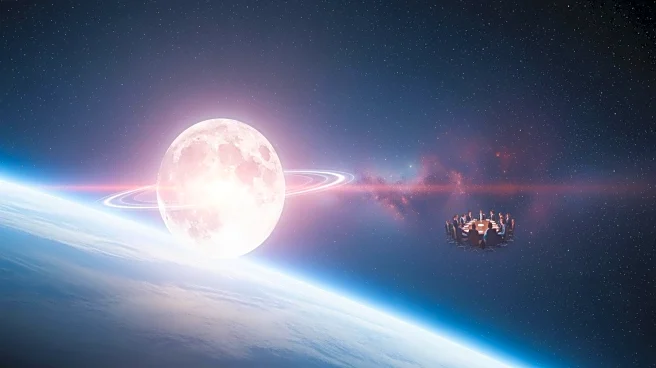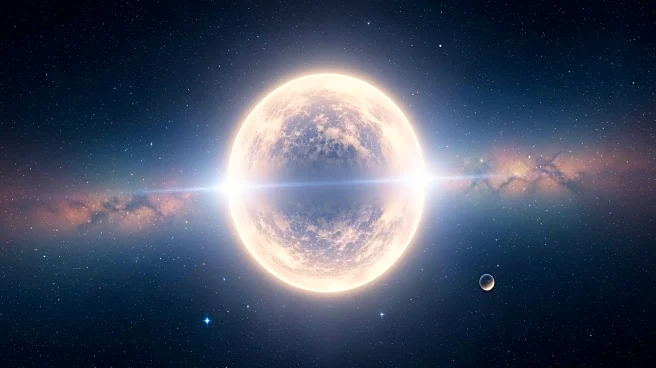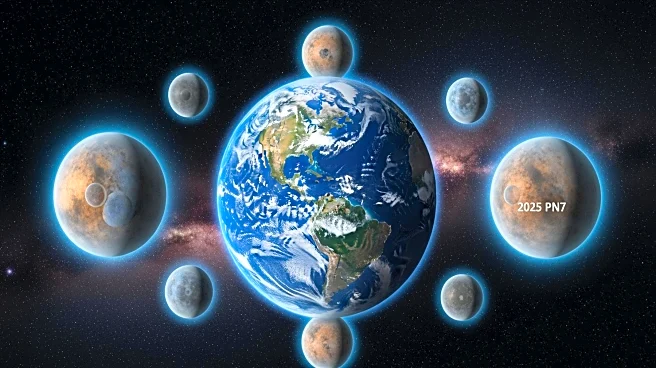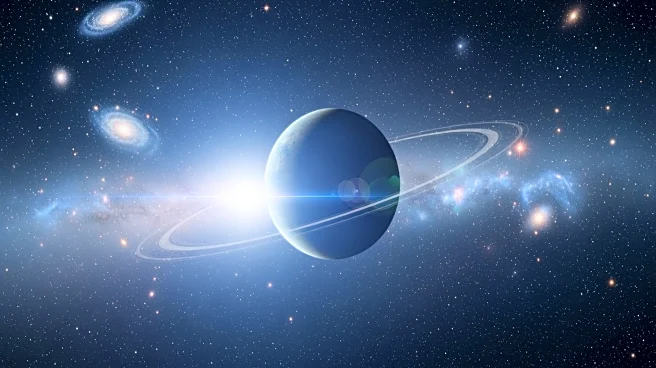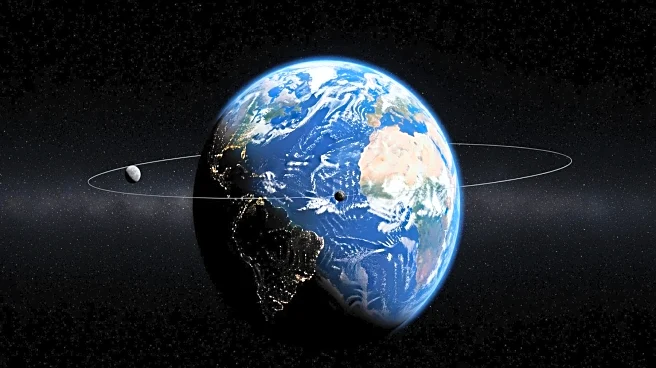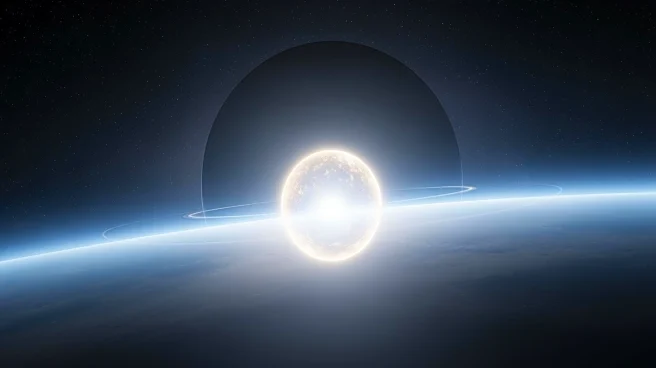What's Happening?
Astronomers have identified a new celestial object, asteroid 2025 PN7, which has sparked discussions about Earth potentially having a second moon. Discovered by Pan-STARRS at the Haleakalā Observatory in Hawaii, this asteroid is classified as a quasi-moon
due to its orbit around the sun that closely resembles Earth's. Although it is not a true moon, its proximity and orbit have intrigued scientists. The asteroid, approximately 60 feet in diameter, has been traveling alongside Earth for about 60 years but was only recently detected. It will continue to accompany Earth until 2083, posing no threat due to its small size and distance.
Why It's Important?
The discovery of asteroid 2025 PN7 highlights the dynamic nature of Earth's cosmic neighborhood and the ongoing advancements in astronomical observation technologies. This quasi-moon, while not a true satellite, provides valuable insights into the types of objects that share Earth's orbit. Understanding these objects can enhance our knowledge of near-Earth objects (NEOs) and their potential impacts on our planet. The asteroid's presence also underscores the importance of continued monitoring and research to identify and track celestial bodies that could pose future risks or offer scientific opportunities.
What's Next?
As asteroid 2025 PN7 continues its journey alongside Earth, astronomers will likely keep observing it to gather more data and refine their understanding of its orbit and characteristics. This ongoing research could contribute to broader studies of quasi-moons and their interactions with Earth. Additionally, the methods and technologies used to discover and track such objects will continue to evolve, potentially leading to new discoveries and insights into our solar system's dynamics.


